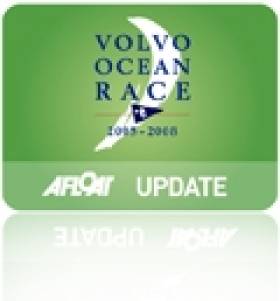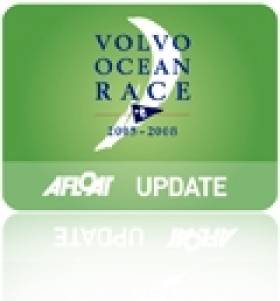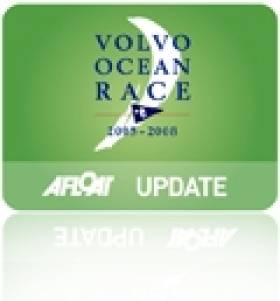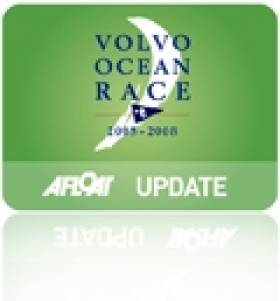Displaying items by tag: Vestas
Volvo Ocean Race Report Into Team Vestas Wind 'Grounding'
#vor – There is to be an independent report into the grounding of Team Vestas Wind's boat on a reef in the Indian Ocean has been set up by the Volvo Ocean Race.
A panel, to be chaired by Rear Admiral Chris Oxenbould (Rtd), is to provide the Volvo Ocean Race with its final report by January 31, 2015.
Volvo Ocean Race intends to make the report publicly available to make sure its learnings benefit the whole sailing world and not only the race. This is scheduled for no later than during the Auckland stopover (February 27-March 15).
Rear Admiral Oxenbould is a former deputy chief of the Australian Navy and an experienced ocean racing yachtsman with a particular expertise in navigation. He is also the chairman of the Yachting Australia National Safety Committee.
Ocean navigational expert, Stan Honey who won the Volvo Ocean Race 2005-06 as navigator onboard ABN AMRO ONE, and Chuck Hawley who serves as the chairman of the U.S. Sailing Safety at Sea Committee, will assist the Rear Admiral Oxenbould on the report.
Volvo Ocean Race Team Vestas Crash Video
#vestas – County Kerry's Brian Carlin, the Team Vestas Wind onboard reporter, recounts the moments Vestas hit the bricks last week in the Volvo Ocean Race. Charging through the Indian Ocean at high speed and in total darkness, nothingness ahead, nothingness around. Speed is good, sailing is supreme. And then ...BANG....
Team Vestas Wind's boat grounded on the Cargados Carajos Shoals, Mauritius, in the Indian Ocean. Fortunately, no one was injured. In the images, the crew head back to the boat to retrieve everything they can; including ropes, diesel, Inmarsat dome and sails.
The nine-man Team Vestas Wind crew were stranded after crashing on a remote coral reef, before being picked up by a coastguard boat and taken to Mauritius.
Shore crew chief Neil Cox, said: "We've had nine guys sitting on a sand pit in the middle of the Indian Ocean. "The coastguard was asking me to warn the guys that the reef is riddled full of sharks and barracuda."
Scroll down for photos of the aftermath taken by Brian Carlin:
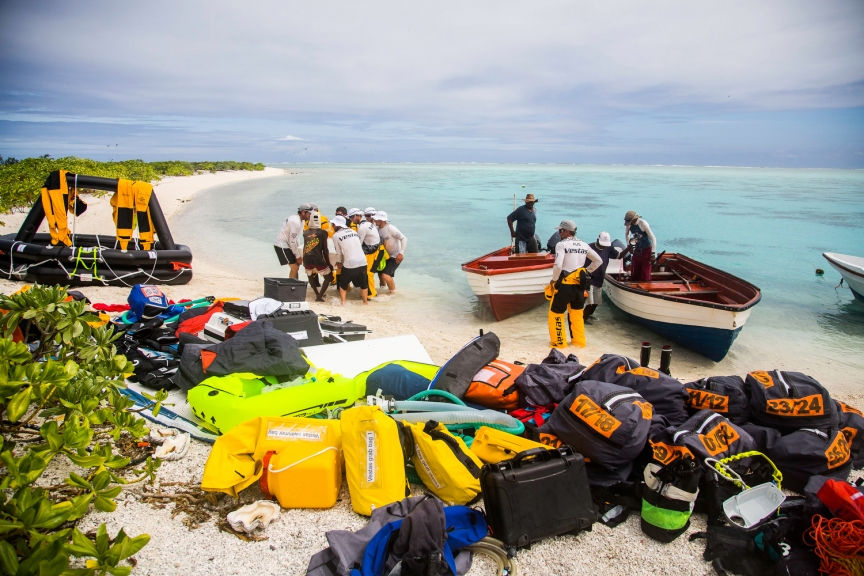



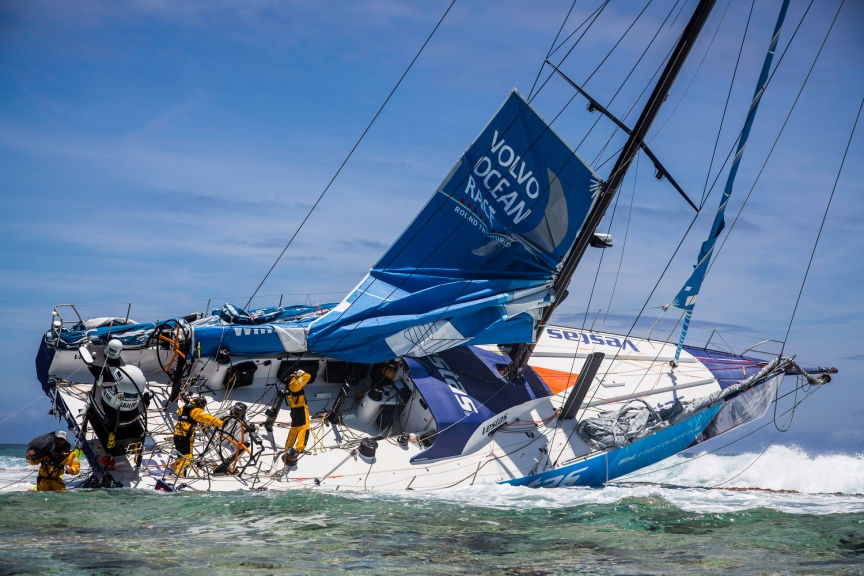

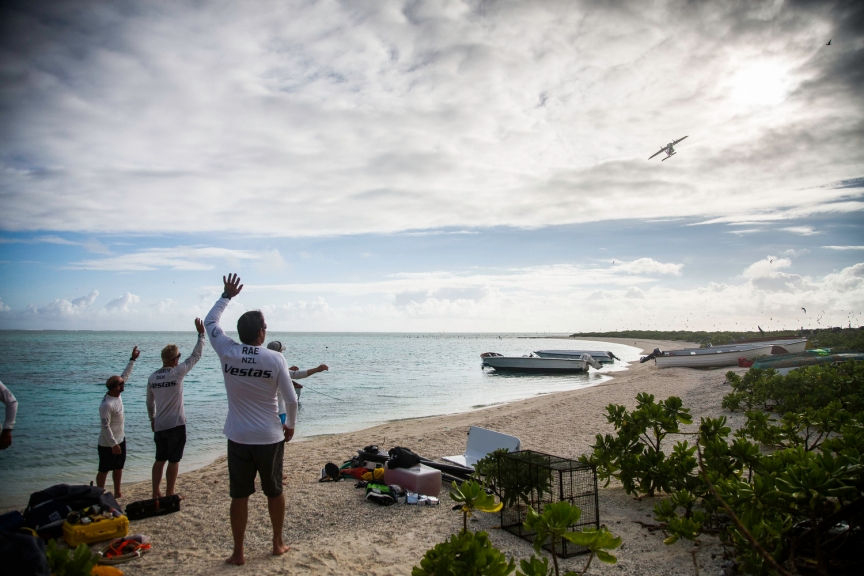
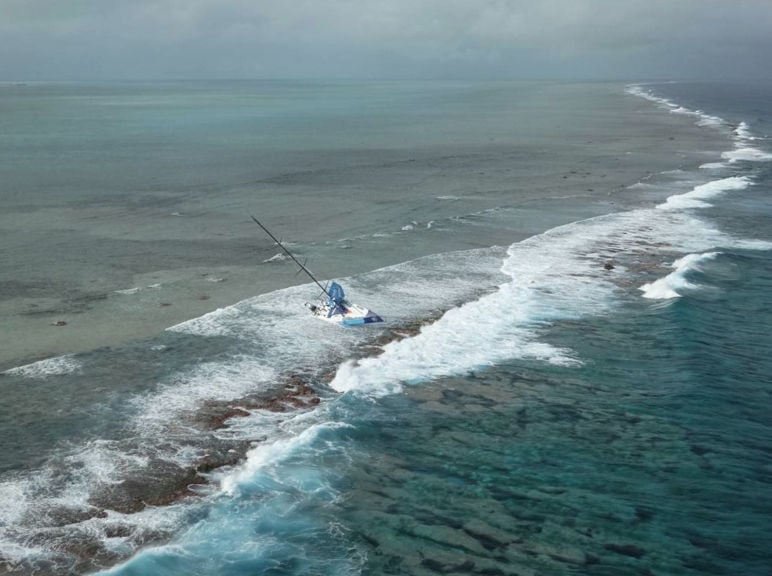
Ship-wrecked Volvo Ocean Race Sailors Back Ashore After Reef Collision
#vestas – Volvo Ocean Race's ship-wrecked nine-man Team Vestas Wind crew finally made it back to civilisation today, telling of their amazing escape from a collision with an Indian Ocean reef which grounded their boat.
The unshaven, exhausted team in the global ocean race were holed up, incommunicado, for three days in the remote archipelago after their boat ran into the reef on Saturday afternoon at 1510 UTC.
Chris Nicholson, their 45-year-old skipper from New South Wales, who was contesting his fourth edition of the nine-month Volvo Ocean Race until the accident at the weekend, said he was still piecing together his emotions after the crash.
"I'm really disappointed of course - on the other hand, we have to realise how fortunate we are for everyone to be here in one piece, and to be healthy. It's pretty amazing, so there's a lot of emotions at the moment," he told volvooceanrace.com shortly after arriving at dockside in Mauritius.
'Very challenging'
"The past four days have been very challenging for all of us, and I am extremely proud of the whole crew's professionalism, composure, and endurance. It's clear that human error is responsible for the shipwreck, there's no avoiding that. And as skipper, I take ultimate responsibility."
They had smashed into the coral rock at 19 knots – the equivalent of 35 kilometres an hour – in the 65-foot Volvo Ocean 65 boat, span 180 degrees and crashed to a halt, grounded on the reef.
They remained on the reef until the small hours of the following morning, before abandoning the boat in pitch darkness and wading in knee deep water to a dry position on the reef, led by Nicholson.
A small boat from the local coastguard then took them early on Sunday to a small islet, Íle du Sud, which is known as a favourite with shark-watching holiday-makers.
The crew could have left the area on Tuesday but decided to stay an extra day to pick up key equipment from their battered boat.
'Clean-up'
Their blue vessel, caught underneath breaking waves, is badly damaged, but the crew decided to remain for an extra 24 hours to complete a clean-up operation around the area.
"The bad things had to come off," said Nicholson, having just stepped off the local fishing boat, 'The Eliza', that transported the nine-strong crew back to the mainland.
"We had a clear list of removing that equipment, and once we had all those off the boat it came down to removing things that were expensive.
"We've done a really good job in clearing it all up."
Experienced New Zealander sailor Rob Salthouse was also keen to focus on the positives. "It's just good to be back on dry land," he said.
"I think the team has grown strong with what we've been through."
Danish sailor Peter Wibroe, white shirt stained yellow by sand, sweat and sea salt, was full of admiration for Nicholson.
'Very professional'
"I must say that the team worked really well together, especially Nico, the skipper, who led the whole situation in a very professional way.
He continued: "We all felt extremely safe despite the situation. We were conscious about what was going on and we all had our responsibilities.
"We worked really well as a team, and that's why we're all here today."
The team's main sponsors, Vestas, a wind energy company, said they were now focused on returning to the race which will continue until the end of June 2015.
"Though we won't be able to compete in the next leg from Abu Dhabi to Sanya, China, we are considering all available options for re-joining the race at a later stage," said Morten Albæk, Vestas' chief marketing officer.
"We'll learn more about the details of what happened exactly when we have a chance to properly debrief with the crew, which we expect to happen in Abu Dhabi over the weekend."
A spokesman from fellow sponsor Powerhouse added: "We at Powerhouse are extremely relieved that no one was injured as a result of the incident.
"When we entered the Volvo Ocean Race with Team Vestas Wind we understood it would be life at the extreme.
"The team still faces many uncertainties, however, we are more than ever committed to support the team in this extremely challenging situation and help them to get back in the race. We are deeply involved, in successful times and in challenging times."
Team Vestas Abandoned, All Crew Rescued in VOR Drama
#vor – Team Vestas Wind crew were rescued in the small hours of Sunday morning after the Danish team's Volvo Ocean Race boat was grounded on a reef in the Indian Ocean, forcing them to abandon it.
All nine members of the team – inlcuding County Kerry's Brian Carlin – were uninjured in the drama, which unfolded from 1510 UTC on Saturday when their Volvo Ocean 65 hit the reef in Cargados Carajos Shoals, Mauritius.
For several hours, the crew stayed onboard their stricken vessel whose stern was being beaten badly by the waves as it was stuck fast in the reef with the bow facing the ocean.
The rudders were broken in the collision and the stern began taking on water although the stern compartment was locked tight.
Finally, around midnight, the team led by skipper Chris Nicholson (AUS) abandoned the boat and then waded, knee-deep through the sea to a dry spot on the reef from where they could be rescued by a coastguard RIB at daybreak at around 0230 UTC.
They were transported to the tiny islet of Íle du Sud, part of Cargados Carajos Shoals, which is also known as St. Brandon and situated some 430 kilometres to the north-east of Mauritius.
Kept informed
Race organisers and Team Vestas Wind will now attempt to take them from there to the mainland. Race Control in Alicante, Spain kept the Maritime Rescue Co-Operation Centre (MRCC) informed throughout the incident.
Team Vestas Wind's rival race crew, Team Alvimedica (Charlie Enright/USA), diverted to assist in a rescue mission if necessary but were eventually cleared to continue racing north after it was apparent that the Vestas crew were no longer in danger.
Navigator Will Oxley (AUS) sent this report from Team Alvimedica: "All is well on board, though it is fair to say we are all shattered and quite emotional about what happened.
"We are really pleased we were able to be of assistance and that the crew of Team Vestas Wind are all well and we look forward to a beer with them as soon as possible."
The Danish team's concern now will be a salvage mission for their boat but it was not immediately clear how much damage the incident had caused.
Knut Frostad, Volvo Ocean Race CEO, said it was also not yet known why Nicholson's crew had hit the reef, but this would be examined in due course.
"I'm extremely relieved that every one of the nine crew members now are safe and that nobody is injured," he said. "That has always been our first priority since we first learned about the grounding.
'Deeply saddened'
"At the same time, I'm deeply saddened that this happened to Team Vestas Wind and Chris Nicholson and his team. It's devastating for the team, for the race and for everyone involved. I really feel for Chris and the team right now and we will continue to support them all the way going forward."
Team Vestas Wind was the last of the seven crews to announce their participation in the race with just six weeks to go before the event began in Alicante on October 4.
However, Nicholson, who was second on Camper and Puma in the last two editions, assembled an experienced crew backed by talented young sailors from Denmark.
They were fifth when the boat was grounded and were fourth in the opening leg from Spain to Cape Town.
"The safety and wellbeing of the crew has been our only concern during these difficult hours," said Morten Albaek, CEO of Vestas Wind Ocean Racing.
"We are extremely grateful to the team at Volvo Ocean Race and to Alvimedica for their support and outstanding professionalism during the rescue operations. The extent of the damage to the boat will be evaluated and dealt with from here on."
Meanwhile, Leg 1 winners Abu Dhabi Ocean Racing (Ian Walker/GBR) took the second stage lead from Spanish rivals MAPFRE (Iker Martínez/ESP) by 0340 UTC on Sunday with Team Brunel in third. But this was not a day when lead changes seemed important at all.
Vestas Wind Completes Volvo Ocean Race 2014-15 Line-Up
#vor – Vestas, the world's leading wind energy company, was today announced as the seventh and final boat for the Volvo Ocean Race 2014-15.
Six-time world champion Chris Nicholson, who will be contesting his fifth race, will skipper the boat and work is already well underway to ready the Danish company's team for the race start in October.
Two Danes, Nicolai Sehested and Peter Wibroe, will feature in the eight-man crew. Sehested, 24, is among the youngest from his country to have competed in the race.
Team Vestas Wind will join Team SCA, Abu Dhabi Ocean Racing, Dongfeng Race Team, Team Brunel, Team Alvimedica and a Spanish team whose title sponsor has yet to be announced, on the start line.
The boat will face its first test on water in mid-August as the crew prepares to sail the 2,000 nautical miles qualifying distance, a pre-requisite of joining the Volvo Ocean Race which starts with the In-port race in Alicante on October 4.


























